Paddleboard Lesson for Beginners - Part 2 - Paddleboard Stroke
Welcome back to our How to SUP This Summer series! In the previous post, we learned about the parts of the board and gear. Now we are going to take what we learned and apply it to the basic skills you need to know as a paddleboarder. Let's start with the paddleboard stroke.
I like to think of a paddleboard stroke as a golf swing: there are few things everyone should be doing but you can make adjustments to suit your body, skills, style, and comfort level. When learning how to use a SUP paddle, it takes a bit of practice to get a good paddle stroke, but once you do, you'll have it for life! And as you can see in the photos, some of the skills can be practised on land so you don't necessarily need to be in the water to work on your paddleboard stroke.
How to Paddleboard Lesson Series - List of Posts
- How to Paddleboard Lesson Series - Part 1: Paddleboard Gear
- How to Paddleboard Lesson Series - Part 2: Paddleboard Stroke - You're reading it now!
- How to Paddleboard Lesson Series - Part 3: SUP Turns
- How to Paddleboard Lesson Series - Part 4: How to Get On Your Paddleboard
- How to Paddleboard Lesson Series - Part 5: How to Get Back on a Paddleboard After Falling

Practicing the paddleboard stroke with our lightest SUP paddle: the Carbon Elite Paddle
Hand Position on a SUP Paddle
Let's begin this instalment of our Paddleboard Lessons for Beginners by figuring out your ideal hand positioning for your paddleboard stroke. It's finding that sweet spot between having your hands too far apart or too close together. There is a simple way to figure it out. Place one hand over the grip of the SUP paddle (also known as the top handle) and the other on the shaft. Bring the paddle shaft to rest horizontally on your head. With your one hand staying over the grip, bend both your elbows at ninety degree angles, just like I'm doing in the photo below. You'll probably need to adjust the position of your hand on the shaft to make this happen. Once you've got your hands properly positioned, keep them where they are and bring your paddle in front of you so you can see: this is about where you want your hands to be on the paddle.

Figuring out your hand positioning looks goofy but it works!
Paddleboard Stroke Breakdown
Now that you know where your hands go, let's go through the elements of a proper paddleboard stroke. There are four things you'll want to remember:
- Keep you arms straight
- Enter around the nose
- Pull along the rails
- Exit at your feet
It really is that easy! The paddleboard stroke can be broken down into three, four, even five or more steps with fancy names (entry, catch, power, release, recovery) but we are going to keep it simple. When I first started learning to my SUP paddle, I found those names intimidating and unhelpful. Better to keep it to terms we can all understand while focusing on proper technique.
Keep Your Arms Straight
When learning how to standup paddleboard, keeping your arms straight is something you want to aim for. It'll help maximize your reach and put the most power in your paddleboard stroke. Let's pick up our SUP paddle again. Now that you have your hands in the proper position, reach forward holding the paddle upright with straight arms. Your paddle should be vertical, with the blade angled forward. Think of yourself as the letter A or a triangle. Your paddle stroke should be on the opposite side of your top hand. So if your top hand is your right hand, you'll be paddling on the left, and vice versa. You can practice this on land a few times by reaching forward with straight arms and then dropping your arms, repeating this ten times on each side.

The classic paddleboard stroke A-frame! Remember to keep those arms straight.
Enter Around the Nose
The next step of the paddleboard stroke is planting the blade of your paddle in the water, towards the nose of the board. Reach forward with those straight arms, extending as much as you can and then plant your paddle into the water, fully submerging the blade around the nose of the board. The motion should be quick and swift, as if spearing a fish. This skill is best practiced standing on a SUP board but there is a fun exercise you can do on land. Do the same motion described but instead of planting your blade in the water, rest it on the ground (make sure the ground is soft, like grass, mud, or sand). Don't be afraid to lean a bit on the paddle with your top hand. SUP paddles are very strong. Do this ten times on each side to get you in the habit of planting the blade down into the water.

Reach your SUP paddle towards the nose of the board.
Pull Along the Rails
Now that you've planted that blade in the water near the nose, it's time to get some forward momentum. To do so, you'll want to pull your SUP paddle along the rails (or sides) of the board. Try to keep the paddle as close to the rails as possible, which will help you track straight. As you become more comfortable and confident with your paddleboard stroke, you can start to use your core during this part of the stroke, bringing your body up to the paddle, instead of pulling with your arms.

Notice how my paddle is right next to the rail of my board.
Exit at Your Feet
Once the paddle reaches your feet, it's time to take it out of the water and get ready for your next stroke. We want all the motion of your paddleboard stroke to be all in front of you, not behind. But don't worry too much if you go a bit past your feet; it's not wrong. However, it won't add any benefits and is just wasted energy. Best to get into the habit of taking your blade out of the water at your feet.
Now that your paddle is out of the water, it's time to do it again. Follow the steps from the beginning (Enter Around the Nose) and look at that; you're paddling forward! Remember to alternate your paddling side every few strokes as SUPs are paddled on both sides, giving you a more balanced workout. As Tyler Reed of Personal Trainer Pioneer said in our post about SUP and fitness, the movement of switching sides and paddling engages your abdominals and gives you a full body workout. Generally, you'll want to take three to six strokes on each side. But there is no set or magic number of strokes, as it depends on factors such as wind, currents, and whichever side is your strongest.

When the blade reaches your feet, it's time to take the paddle out of the water
Keep on Paddling and Practicing!
And that's how to do a basic paddleboard stroke. Pretty simple, eh? Keep those arms straight, reach for the nose of the board, bring your paddle along the rails, and keep all the motion in front of you. The more you practise, the easier it will become! So grab your SUP paddle and practice on land or in the water. Next time in our Paddleboard Lesson for Beginners series, I'll teach you how to change directions with two easy SUP turns.
Bonus Tips
If this is super easy for you, there are some other aspects of the paddleboard stroke you can work on. Try engaging your core after planting your blade. Think of bringing your body past the planted blade rather than paddling with your arms. And when exiting the blade, don't swing your paddle. Rather, keep it low to so it's ready for the next stroke.


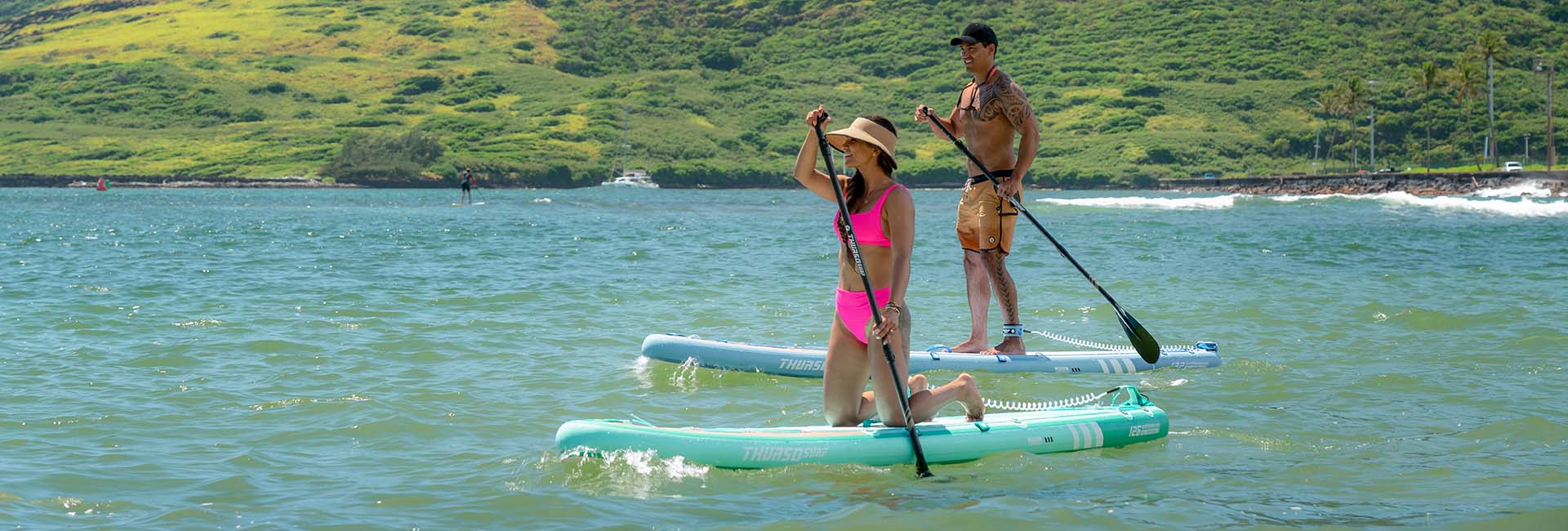
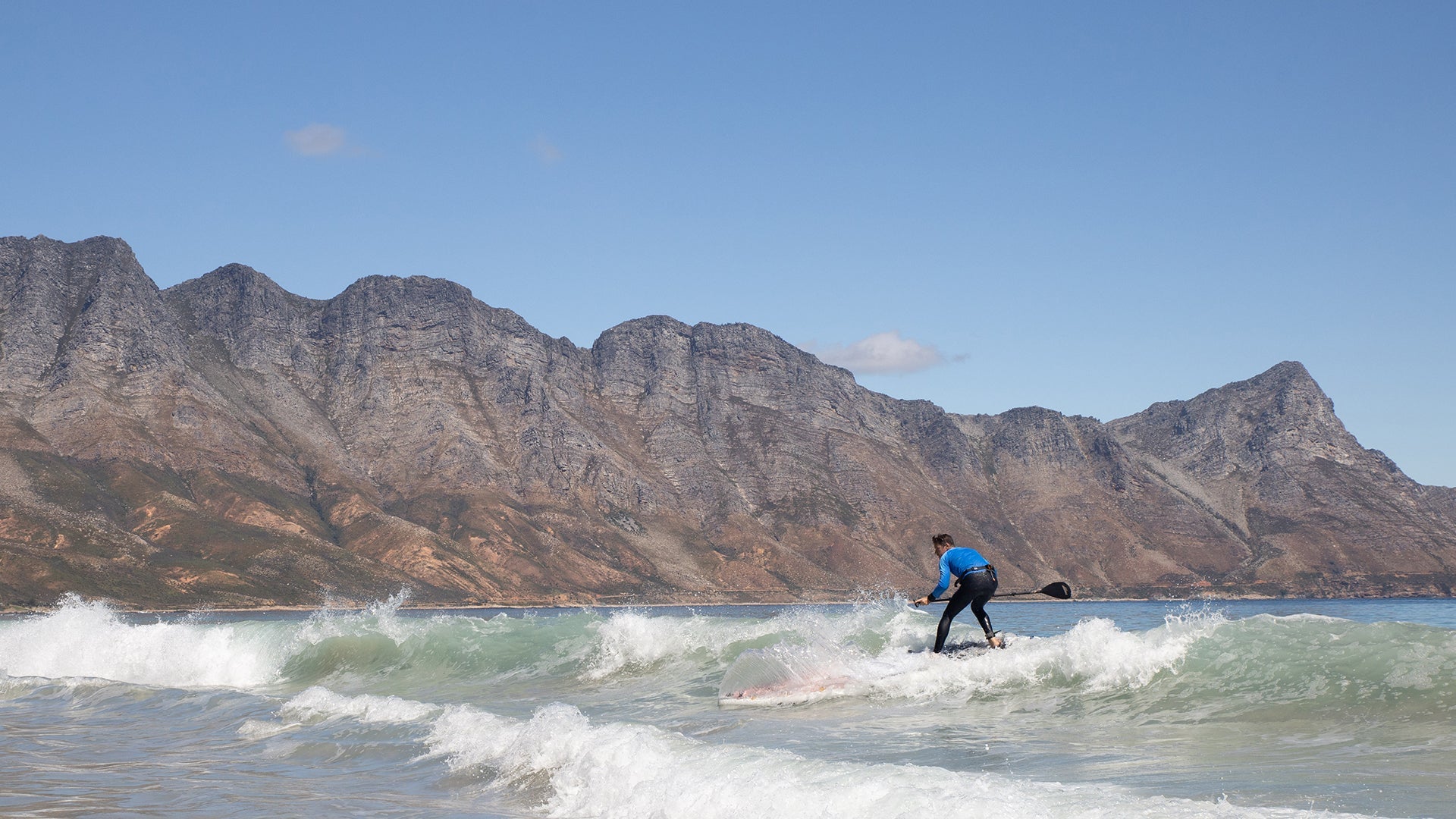
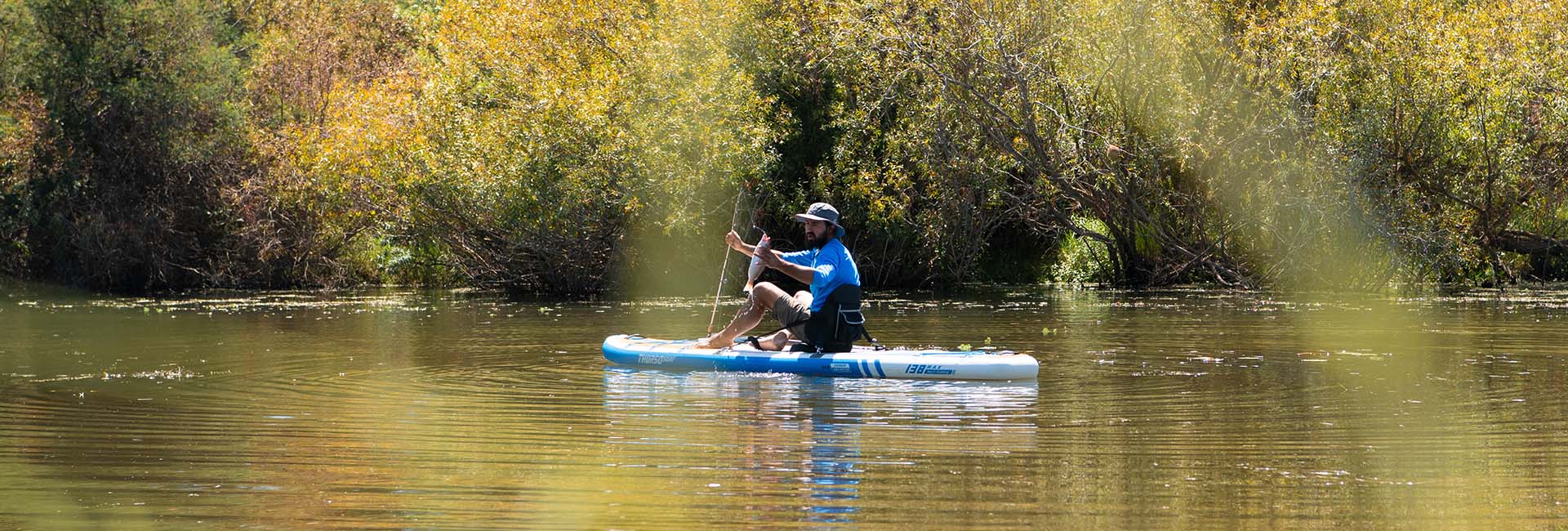
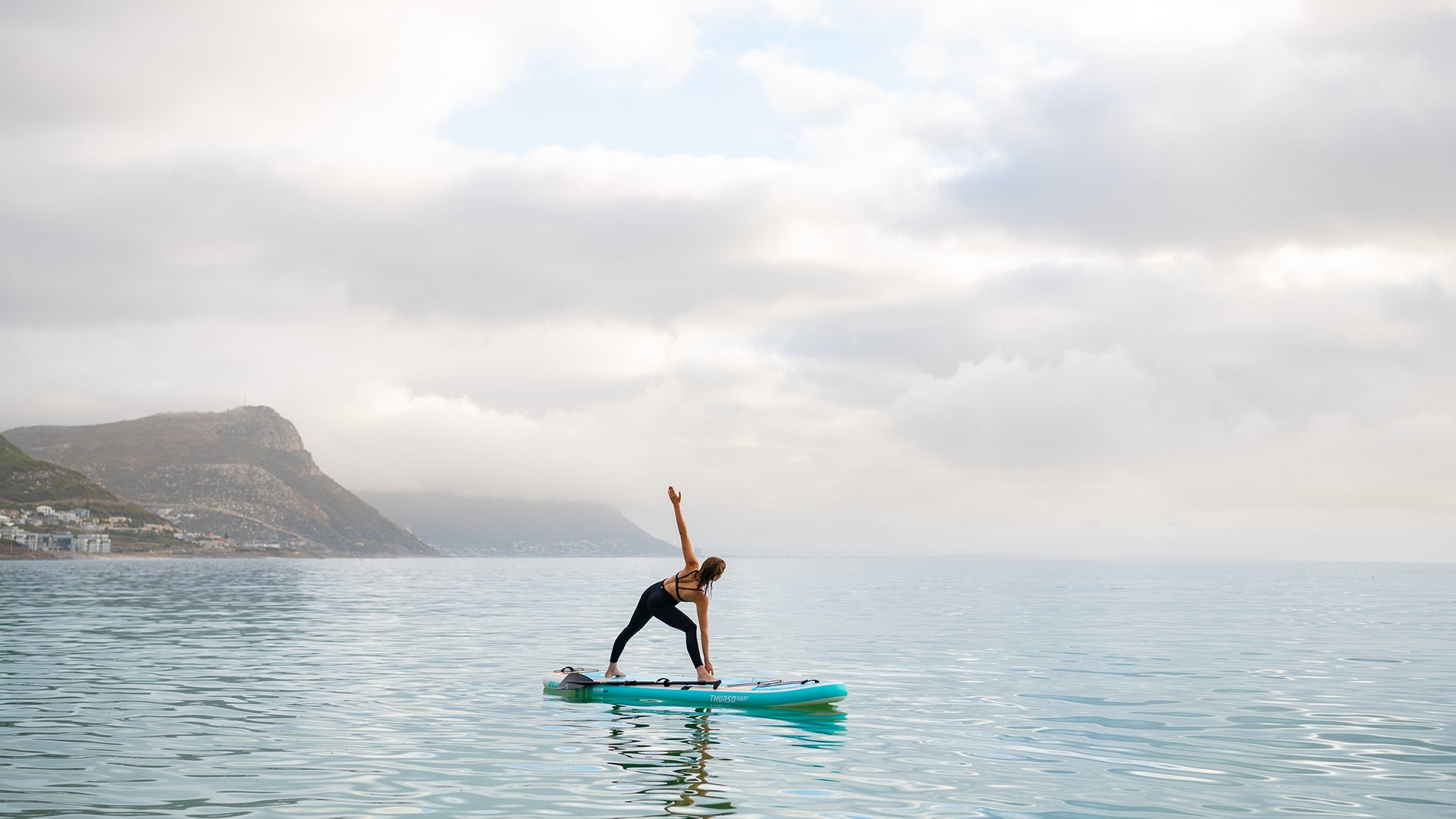
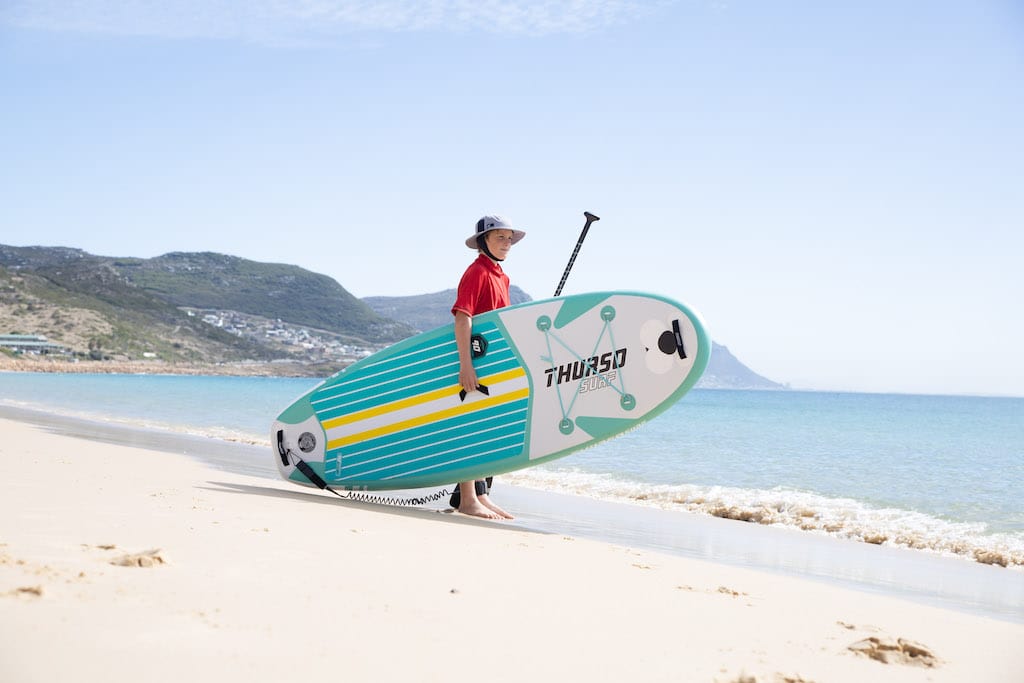
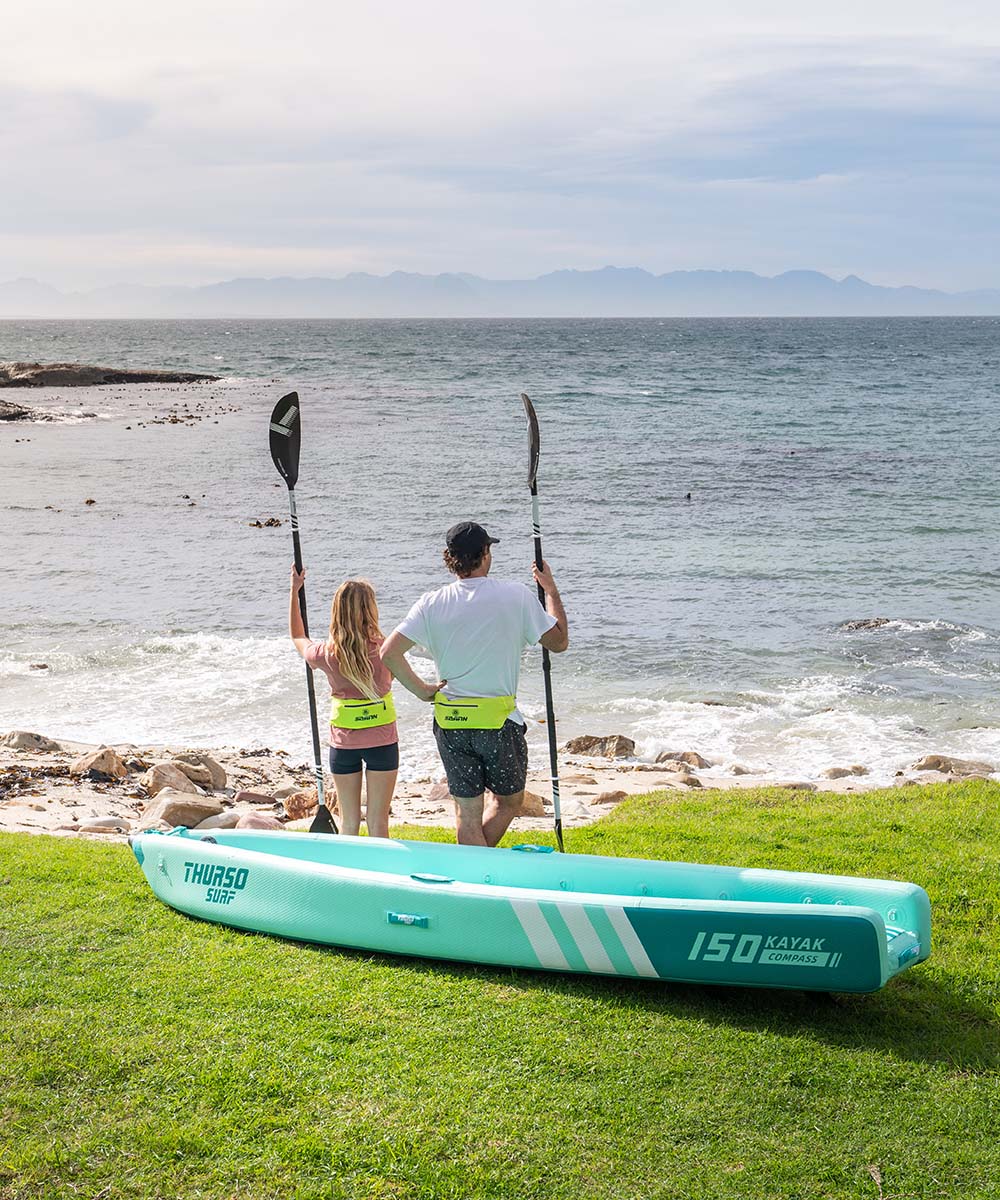
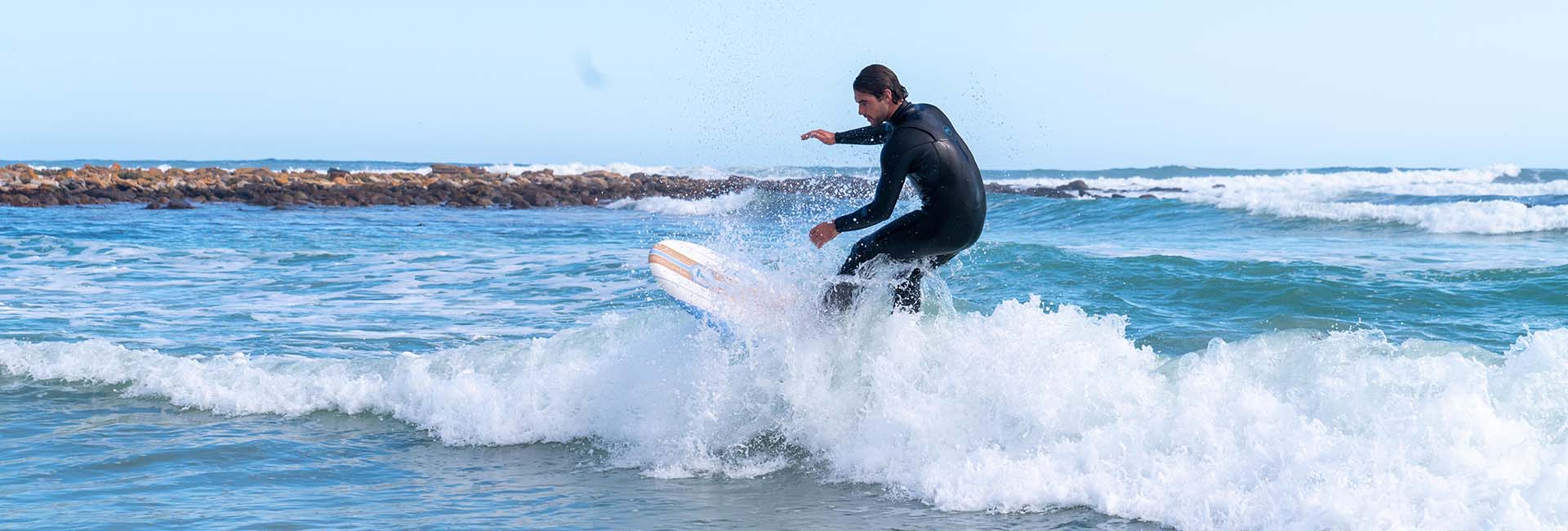
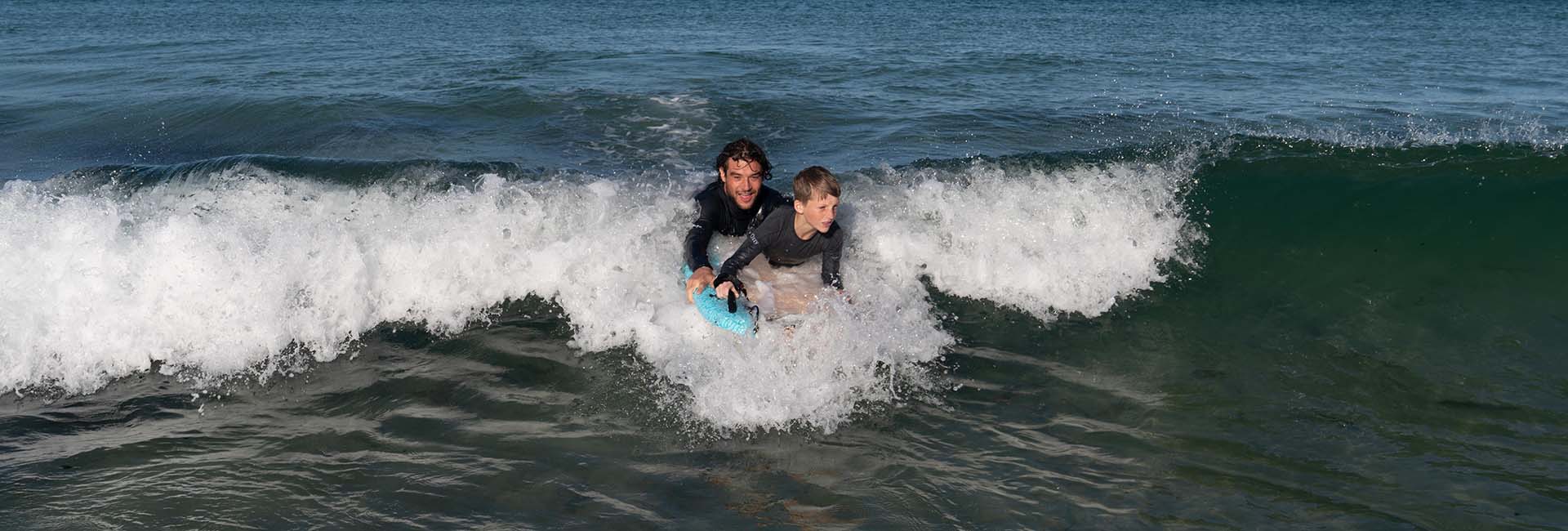
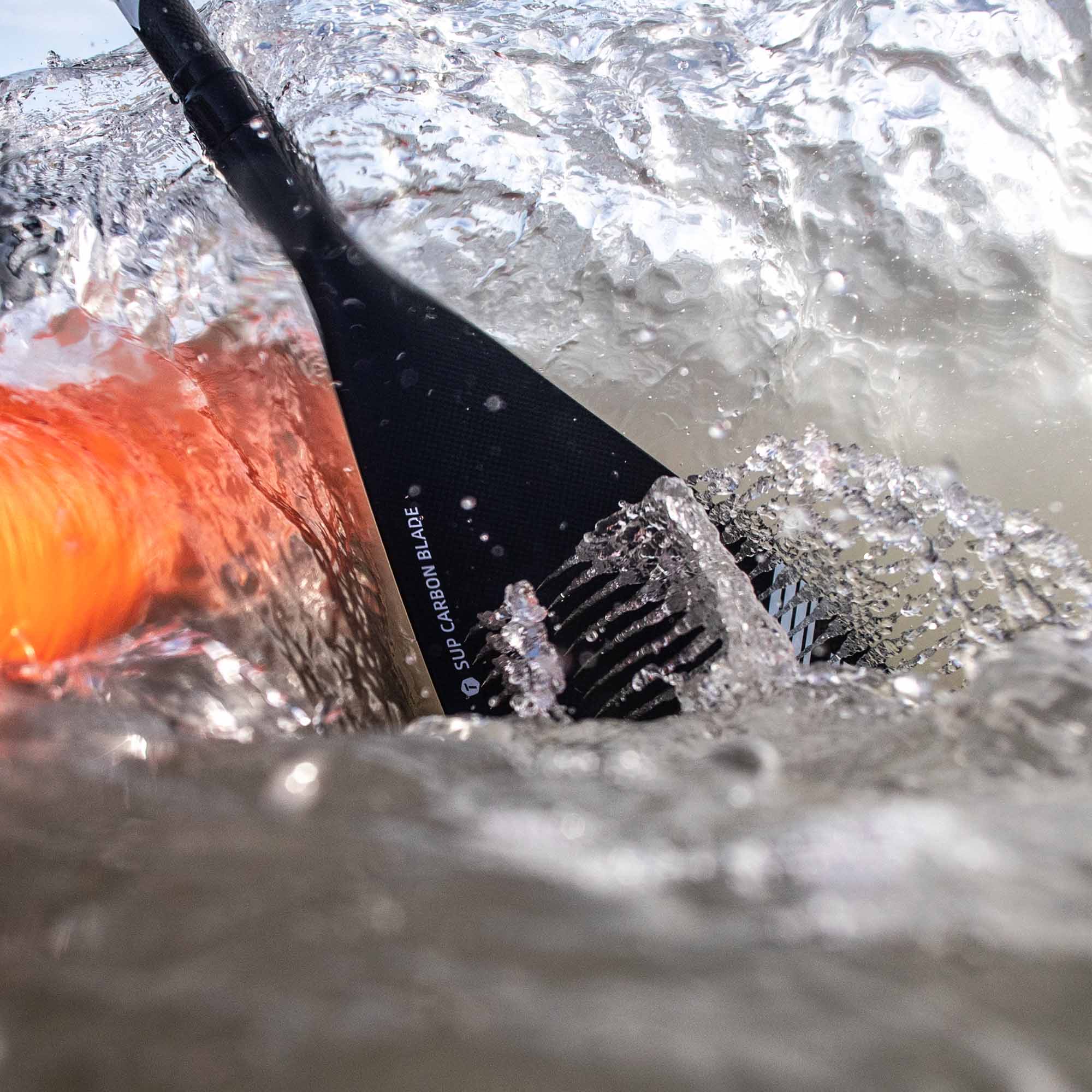
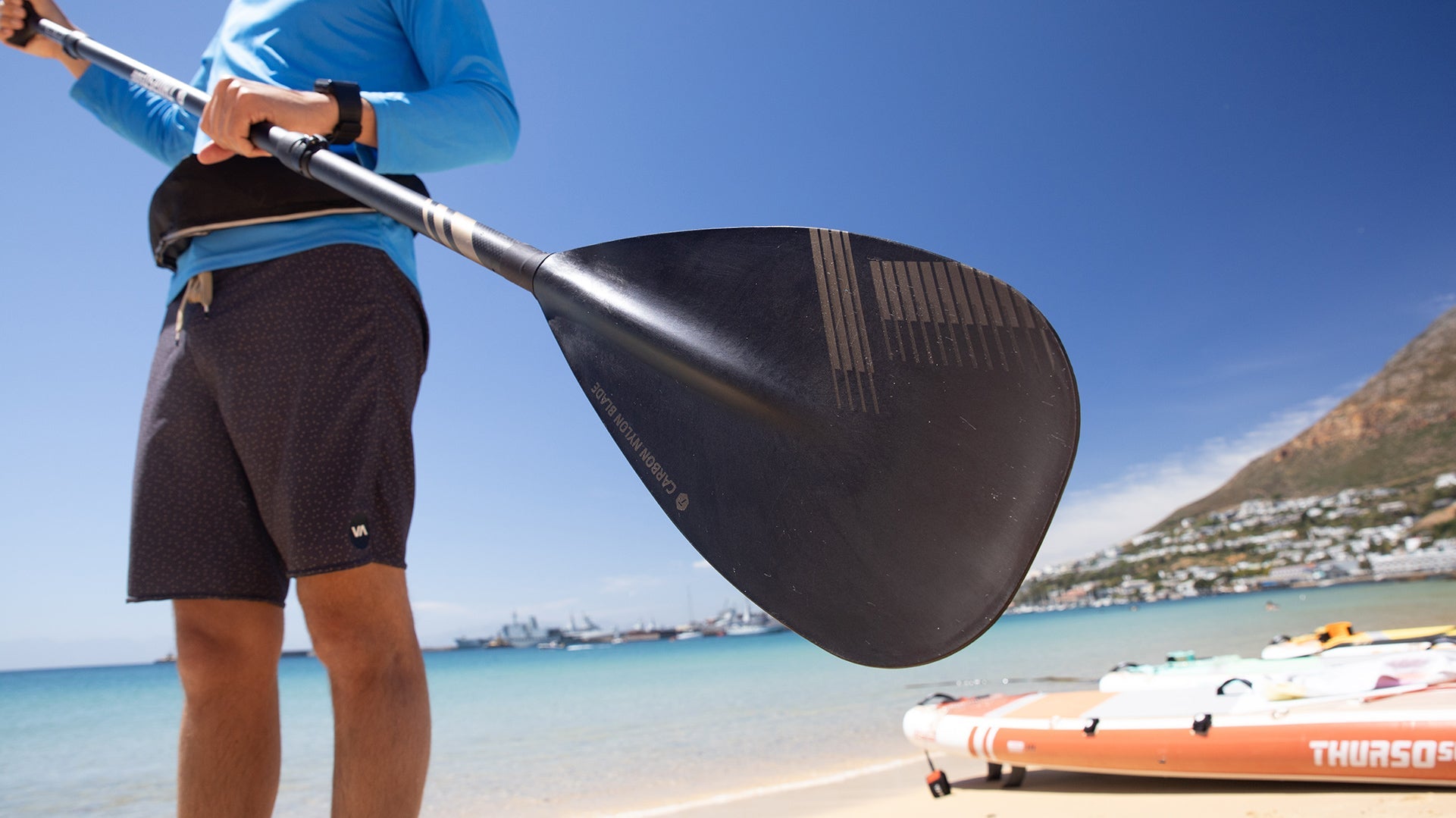
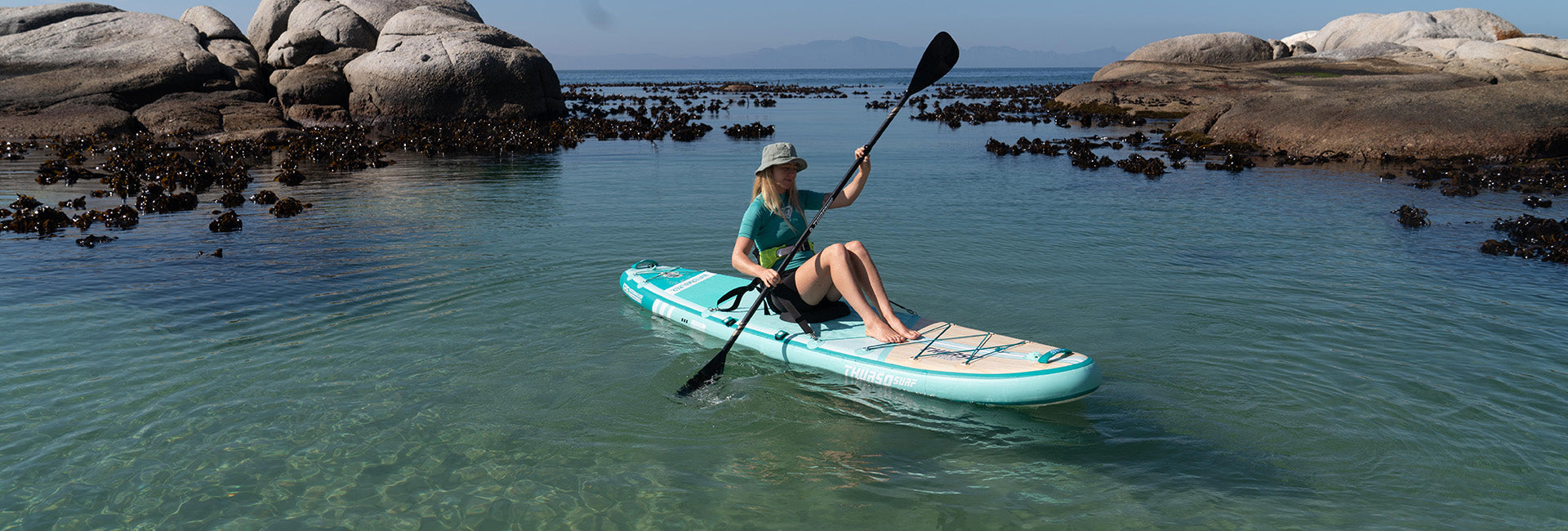

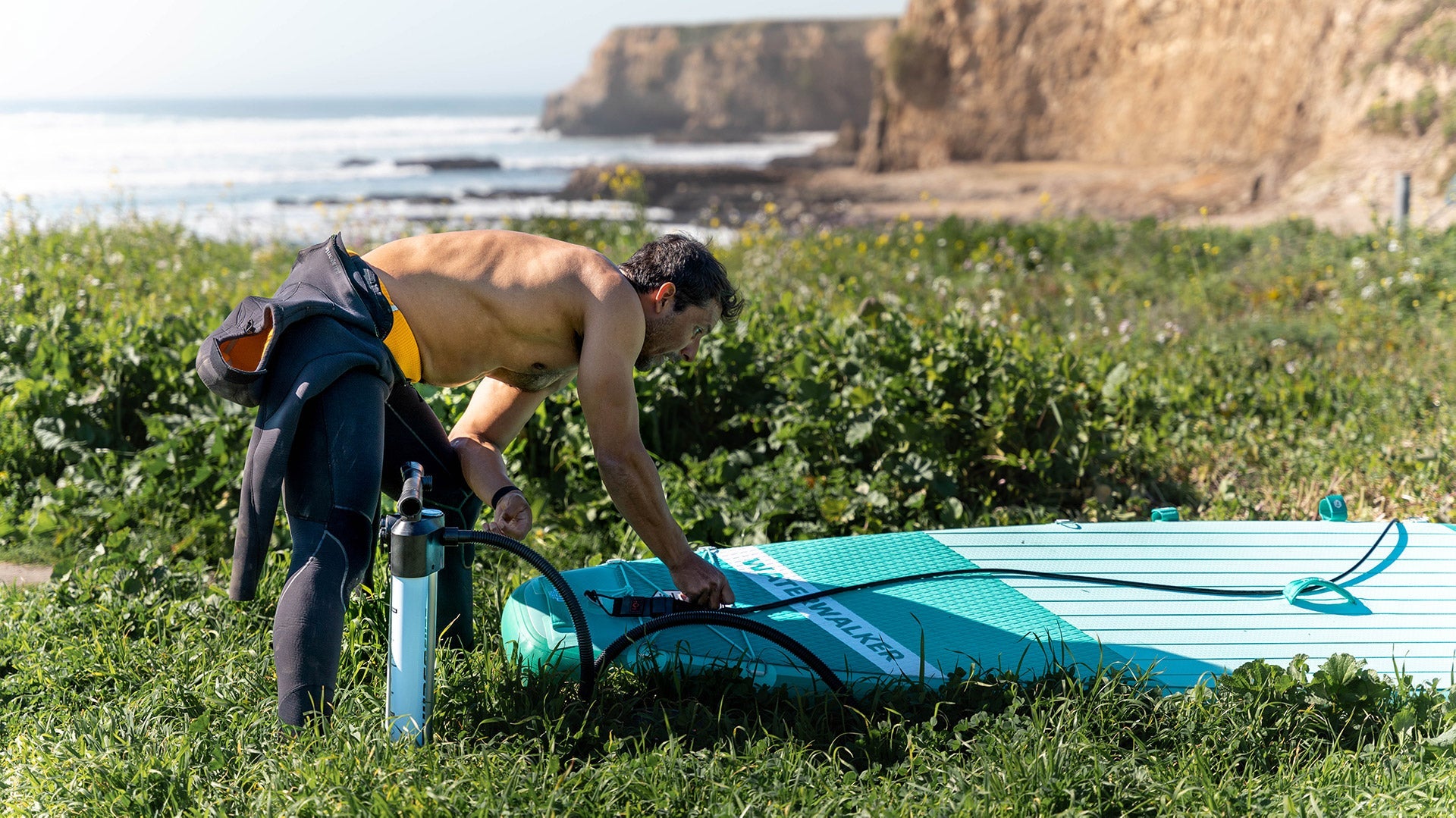
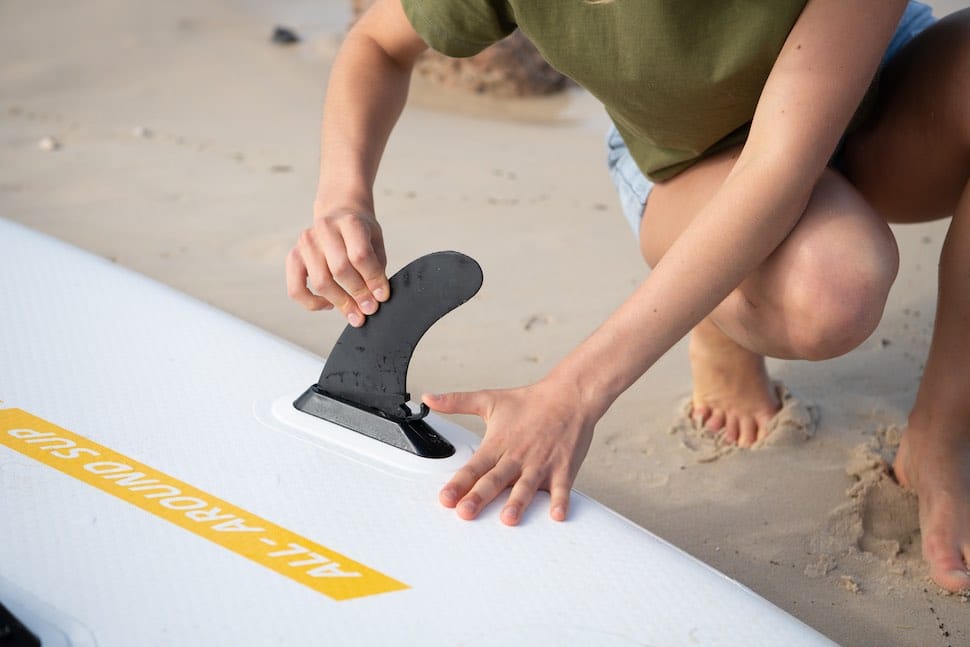
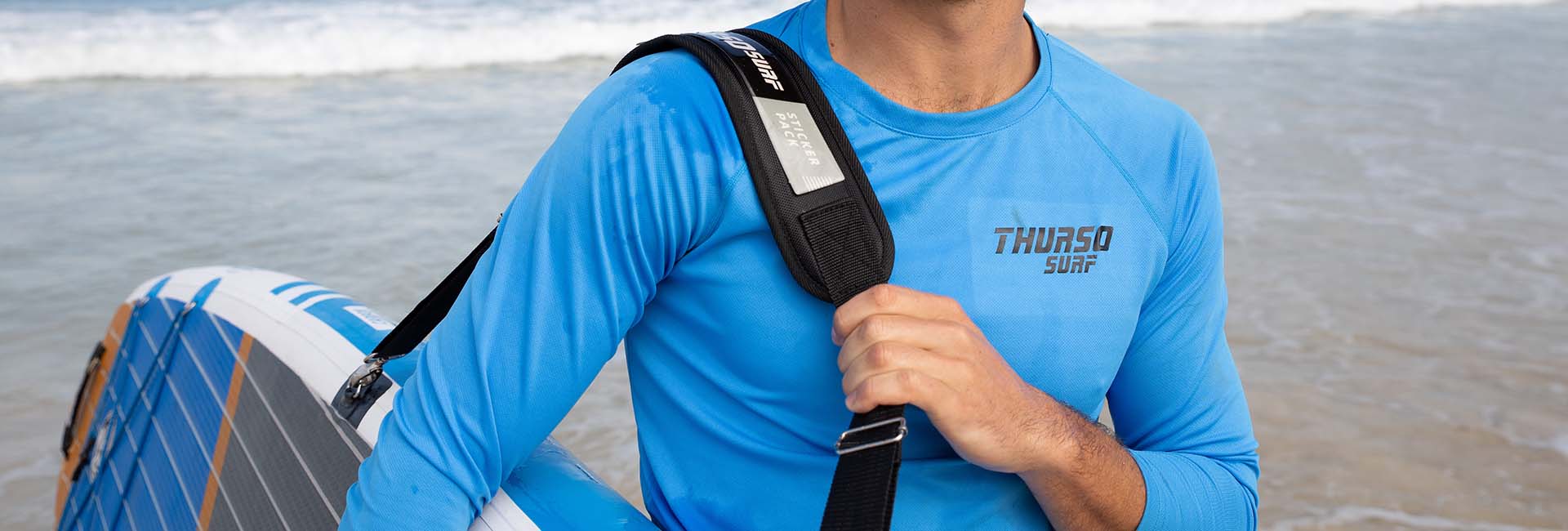



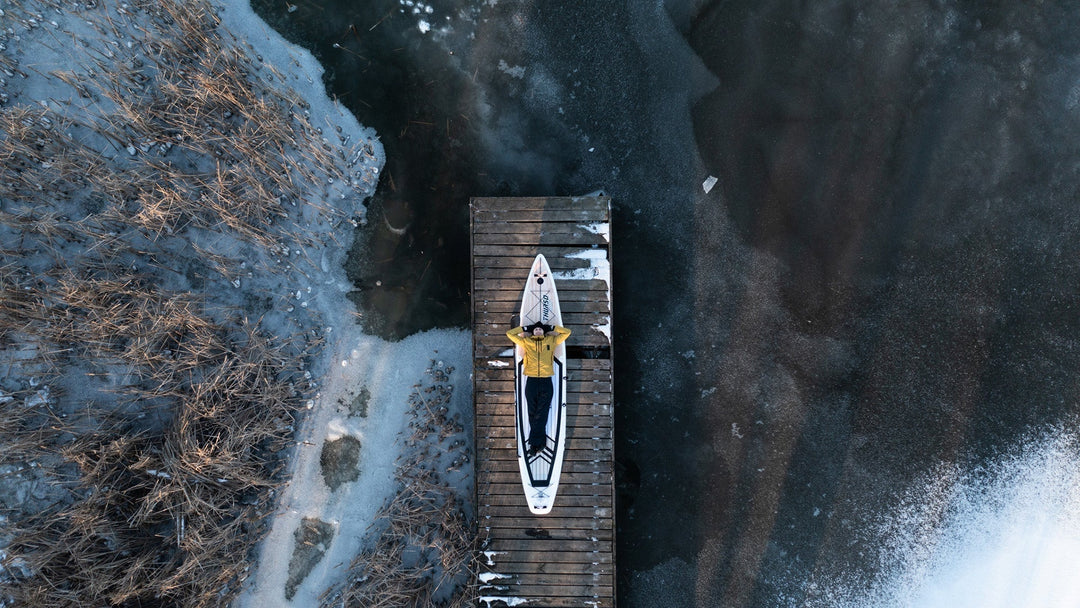
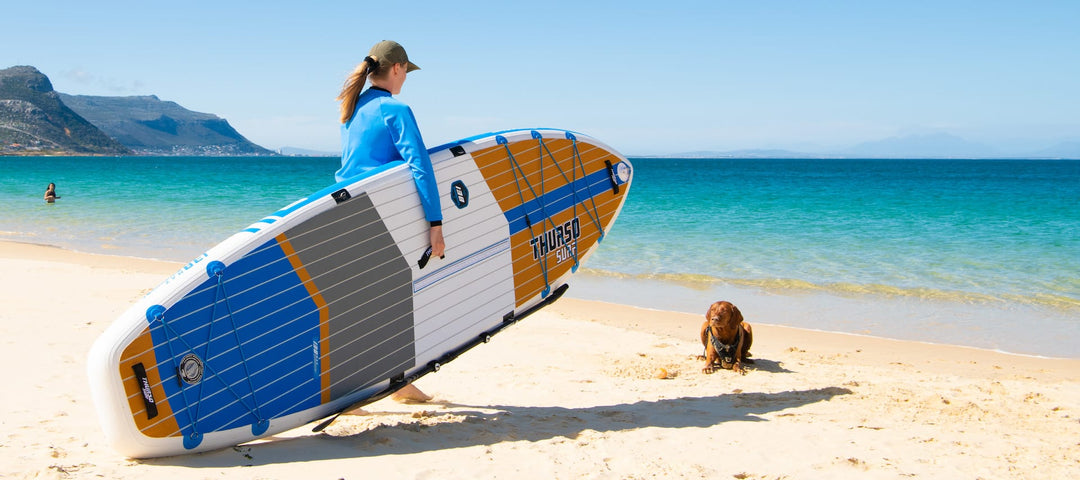
Hi Rene,
You’re very welcome! Glad the tips are helpful. Each instructor has their own way of teaching, so it’s always nice get different perspectives and see what suits you best.
All the best for a great SUP summer!
Cheers,
Jordan-na
Thanks for the excellent tips Jordan-na. I have completed three group lessons on the tidal Thames (London, UK) so far and the instructors haven’t mentioned the hand placement technique or A frame position yet! I will give it whirl this weekend.
Hi Rusty,
Thanks for your kind words. Glad to hear the guide has been helpful! We’ll be posting more in the coming weeks. Feel free to reach out should you have any questions or suggestions of what you would like to see in our blog.
Cheers,
Jordan-na
Thanks Jordan-na, we love paddle boarding and are always looking to improve our technique and help our 9 year old daughter too. This simple guide has really helped. Rusty
Thanks Jordan-na, I love paddleboarding and so does my wife and daughter, we are always looking for ways to improve our technique and this has really helped.
Leave a comment